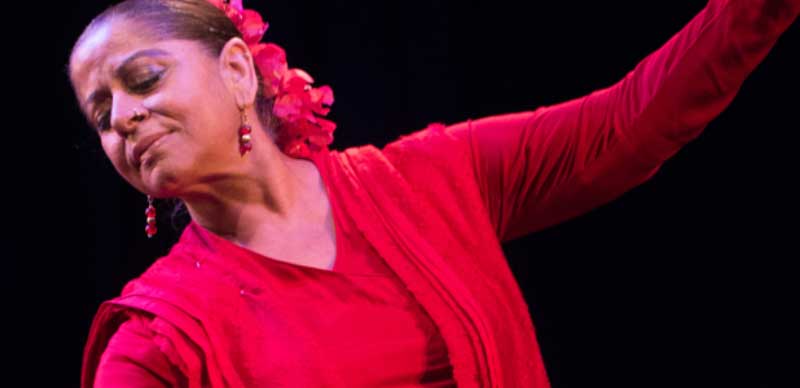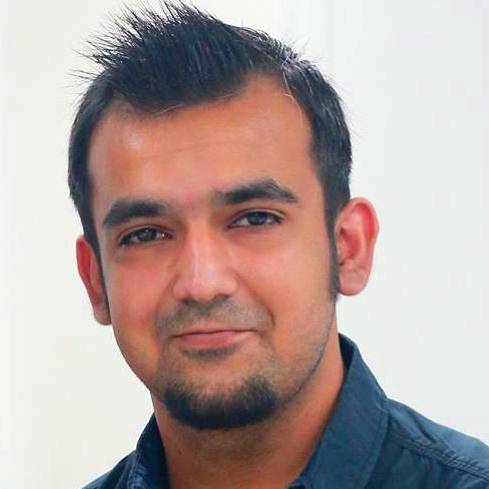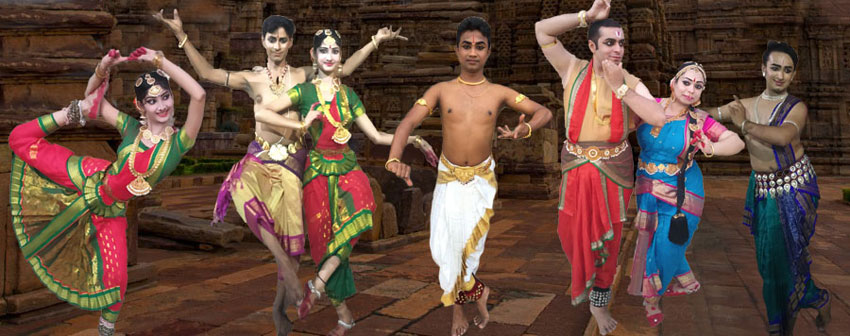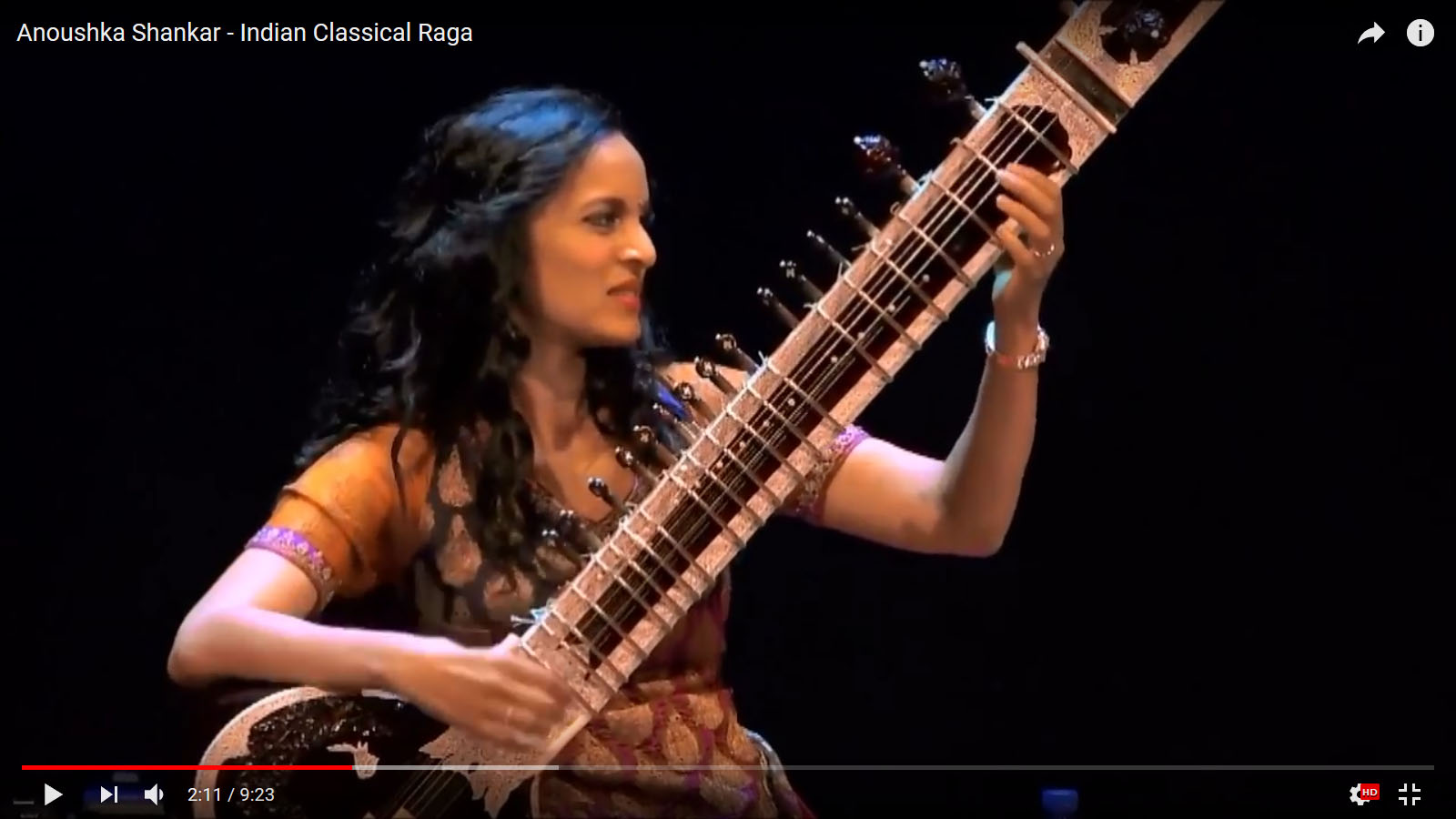KATHAK: For someone with very little knowledge about this old dance form, I went to interview Nahid Siddiqui with a layman’s curiosity. I sat on the couch, waiting, and she entered the lounge with a double-handed grip on her tea mug and a big smile on her face. You could notice the poise of a performer in her stance. We exchange greetings and sit down to start the conversation.
One of the things you’d notice about Siddiqui is that she talks in abstract notions a lot. And funnily enough, she admits that’s exactly what draws her towards kathak, even more than the narrative style. And perhaps that’s what the essence of art is: bringing abstract ideas and manifesting them through creation. In Siddiqui’s case, that creation is in the form of kathak dance performance. One line she says sticks in my mind, and it’s the kind of words that encompass the idea of an artist’s queries. She says, “Sometimes I have lots of questions but I just soak in the answers from nature. It’s like merging into cosmos.”
That, to me, sums up the purity and the core of what kathak is. I tap the recorder on my phone and we begin the interview.
“As a young girl, even at the age of 4, 5 years, I really liked to move. I didn’t know what dance was back then, but I was very expressive in my body language,” she joyously tells me. “I wouldn’t hesitate when asked to dance, in fact, I wished someone would ask me to. It hit me later on that I was actually doing kathak.”
She says she found her self-expression through the urge to move and dance. Siddiqui is and has been at the frontier of kathak dance in Pakistan for the last several decades. The eldest daughter of well-known actress Talat Siddiqui, has been performing for decades and been a disciple of two great teachers: Baba Maharaj (also known as Mahajar Ghulam Hussain Kathak) and Birju Maharaj.
She shares her initial exposure to dance was through her mother who took her to variety shows in Karachi. “I got the opportunity to go to these shows which she’d often host. And the image that lingered long after was not of acting or singing, but of the visual beauty of a dance performance.”
You take something like a verse from Bulleh Shah or Amir Khusrow and visualize it through body movement on stage, and the entire experience becomes one of transcendence. She quotes Faiz Ahmed Faiz’s verse ‘Sham ke paich o kham sitaaron se, zeena zeena utar rahi hai raat (From the entangled stars of the evening, the night is falling)’ and says, “He gave this visual to me, but it’s so difficult yet beautiful to translate it in a dance performance.”
Siddiqui makes sure I understand that the process of finding meaning in words and music and projecting it through the vessel of her body is what she lives for. It’s an artist at work, a madman who sees the cosmos in colorful miniature glass globes.
“When I dance, I forget the material world. And you can only perform well if you don’t have anything to hide. Only a free soul can dance,” she says.
And that is her secret – a swimmer who dives in the deep waters and forgets the land, a worshipper who loses herself in the sacred chants. “This is the canvas that I take everywhere with me,” she says, pointing at her body. “And I paint.”
Her analogy does, in fact, paint a clearer picture. Kathak, as a dance form, has evolved throughout hundreds of years of history. The word Kathak comes from ‘katha’ meaning story and kathak meaning the storyteller. The art form, which started off in Hindu traditions, was a vessel for Hindu religious stories and was performed in temples. She explains how kathak is different from other classical dance forms in the Indian subcontinent. “It’s like different dialects of a language. They differ in nuances and each has focus on a different element.”
Fast forward to the Mughal era, kathak’s boundaries were expanded to include Muslim and Sufi sensibilities. “Poetry, geometry and mathematics, all of which flourished under the Mughal rule, are great aspects of kathak,” says Siddiqui. “Mughals chose this art form because, as compared to others, it was expandable and could be moulded. It’s comparatively the most natural dance form.”
In its essence, Siddiqui says, kathak is similar to Chinese martial art form Tai Chi with its “slow movement which emphasizes body control. Body and arm control, and footwork is very important in kathak as well.”
She draws a comparison with Spanish dance form Flamenco as well. “Gypsies travelled from Rajasthan and took the influence of raw Kathak at the time. The base of Spain’s Flamenco dance is Kathak – the only differences are the use of castanets and that they wear shoes. But the base is the same. Only kathak deals with more romantic stories, just like our poetry.”
The artist says the widespread influence of kathak and the fluidity and naturalness of the dance form are some of the reasons it’s used in films too. “Kathak is not stylised. That’s why films also take the costumes of kathak, but it doesn’t leave a lasting impression. The portrayal then comes under entertainment, not art.”
For Siddiqui, kathak is like an abstract painting: you go to a gallery, ask the painter and he’ll tell you to understand however you want it. And she demands the same respect for her art.
“I’m the one who refused to dance in front of dinner tables,” she says. “That setup puts me off. That is no respect for the artist. I said I am not a cabaret dancer.”
She narrates an incident from many years ago. “At a concert in Dubai, (Bollywood actress) Hema Malini and I were performing in two separate halves of the show; I was quite young and doing the first half. The setting was the same – dinner tables. Coming from Pakistan, I was more familiar with it, and also wasn’t in a position to dictate what I wanted. But Hema Malini came and she grimaced upon seeing the setup and walked out. Everyone went to convince her and she argued that it was no respect for the art form and the artist. Eventually, she was convinced to perform but she wasn’t happy about it.”
The Pakistan Pride of Performance award winner sighs in joy upon remembering the moment. She goes on about the value of ritual and the respect for art in India. She gently balances the pride in her work with humility. “It needs a certain passion and madness to do something an entire lifetime. Kathak has the great ability to transform and bring out the soul,” she says. “I’ve done a lot of research on and performed Kathak for so long and it’s never enough. You always find something new. People stop after a certain time and feel glad after achieving just a little. They become content. When you become content with what you have done, it results in mediocrity. It’s always in the hands of a practitioner how far he takes something.”
In Pakistan, she has been carrying the torch of kathak for years. In the late 1970s, with the onset of Ziaul Haq regime, dancing was banned. In spite of it, Siddiqui continued dancing and defied the ban. “It helped me work that much harder. How can you ban beauty? A lot more people supported me because I continued performing,” she says. “You can’t cage a society. That’s why there’s a certain mental dwarfness that’s prevalent today.”
Since the ‘Islamist’ regime and the extreme changes Pakistan has undergone as a society in the following decades, dancing is still somewhat frowned upon and considered ‘un-Islamic’ even though it’s heavily imbued in our society and celebrations. Siddiqui has an answer for that:
“It’s important to educate people. Ugly entertainment has been widely propagated. People aren’t introduced to art. They say it’s not part of our religion but it has nothing to do with religion.”
She says, “People confuse religion and spirituality. No one stopped Bulleh Shah when he said ‘main nach ke yaar manawaan.’ They don’t have thinking minds. Abida Parveen sings, “Kaaba taa de, mandir ta’ de, dil na kisi da taa’ (Destroy Kaaba and the temples, but don’t break someone’s heart). But no one bans them. But when it comes to a woman performing, they call it body display. It’s a complete wrong mindset, that’s all.”
According to Siddiqui, women need to be educated to change this mindset. “Until you see the same number of women in the offices, on the road, free women, they will always cage them.”
But as a reformer, she has her own ways to contribute and help change the mindset.
“You have to penetrate the society and not care what has happened or what others say. If someone asks me why I dance, I will ask them why they breathe or eat. I am not the one to fight or go in the streets and protest. The fact that I continue dancing is a statement in itself.”
At this point, I couldn’t help myself but wonder how kathak has almost become an elite art form in itself, at least in Pakistan. Siddiqui doesn’t entirely agree but says surely educated minds can receive something more readily. “But it’s not fixed obviously. Even ballet is considered an elite art form. Teaching is one way to make people more aware of kathak.”
As she continues in her pursuit of introducing and popularising kathak in the new generations, she continues performing and holding workshops, including one recently at National Academy of Performing Arts (Napa), Karachi. Her eyes radiated when she mentioned she got a standing ovation from a crowd, most of which comprised of youth. The excitement of an artist receiving an applause never gets old.
Siddiqui as a performer aside, as a mentor, she has a different way about it. “I keep practising. I feel if I’m a tool to bring this art form in front of people, then I need to have a sharpened tool. I have to be an example so I have to keep doing it. You have to go after something with that zeal and burning desire. Don’t do it with a commercial mind. I’ve had students who have done that and once I realize, I request them not to tell anyone they learned from me.”
On the method of teaching, she says there are still no systems of teaching sangeet. “But I have my own notation system, which breaks down the process of learning and makes it more comprehensible. In the earlier days, they only used to impart knowledge within the family. And for example, a daughter gets married, and they would gift her musical compositions in dowry. Now the world has changed.”
As Siddiqui’s ride awaits her, she says it is time for farewell. On a parting note, she says “Kathak is the katha (story) of life. Beauty, happiness, sadness, everything is a part of it.”
She says the dance form is an amalgam of acting, painting, geometry, poetry, colors and music altogether. “People should open up to beauty more. In a world where we’re more inclined towards weapons and ugliness, our children and youth have to channelise their energies somewhere. Give them instruments to play with and feet to tap, and they will definitely go for that instead of other options.”
During Nahid’s visit to New Delhi in 2008, famous photographer Avinash Pasricha clicked over 300 photos of her. Here are 11 of them selected by Pasricha himself.









